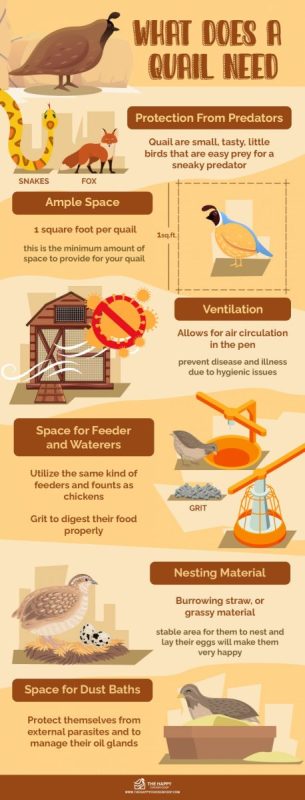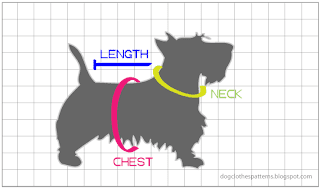
Keeping quails at home: features of caring for young and adult birds
Keeping and breeding quails is a very useful and profitable occupation. The meat and eggs of these small birds contain animal protein important for the human body, as well as a balanced complex of substances useful for humans. Many say that quail eggs have medicinal properties. Quails grow and develop very quickly, they are prolific, therefore, during the year, the available number of birds can be increased tenfold.
Contents
General information about quails
There are the following directions of development of these birds: egg, meat (broilers), fighting and decorative. The most useful and profitable is the breeding and maintenance of quails of egg-laying breeds.
In terms of egg production, quails are in the lead in comparison with even thoroughbred chickens, because the female quail is capable of produce about 300 eggs per year. In terms of egg weight to body weight, quails have the highest rate among other industrial birds. The standard weight of a female quail egg is from 9 to 12 g. The color of the eggs is variegated, the spots are usually dark brown or blue. Each quail has its own special pattern on the shell.
Birds of different breeds and hybrid forms have differences in appearance, feather color, weight, productivity and other features.
The only slight disadvantage of quails is their small size. But as a result of this “disadvantage”, undeniable advantages emerge: quail meat and eggs do not lose their taste, egg production does not deteriorate, susceptibility to diseases does not increase, which is typical for large birds due to the constant increase in their body weight.
Female quails have a larger body weight than males. Quails in captivity mature for oviposition as early as a month and a half. These birds are less likely to contract avian influenza because they are kept indoors.
Keeping and breeding quails
Adult quail. Breeding, maintenance and care
When purchasing birds, be aware that it is better to take individuals aged from one to one and a half months. Young quails will endure transportation without much stress, get used to a new habitat, a new daily routine, diet and light regime. pay attention to bird appearance. There are several signs that indicate the health of an individual:
- The quail’s beak should be dry, it should not have growths.
- Feathers near the cloaca should be clean.
- The bird should not be obese, but it should not be too thin either.
- In the breath of a quail, extraneous noises, such as whistling or wheezing, should not be heard.
- If the bird is sick, then lethargy and disheveledness will be present.
To keep quails at home for the purpose of producing food eggs, quail is not needed, females will lay anyway. But for breeding quails and the appearance of offspring, quails need a male.
Decorative quails are kept outdoors in spacious enclosures with a ceiling height of at least one and a half meters. Quails of meat or egg orientation settle exclusively in cages. In the room where the birds are kept, artificial lighting and a ventilation system should be equipped. There should be no drafts, otherwise the birds will begin to drop feathers sharply.
The house must be warm. If necessary, install an additional heat source. It is not necessary to heat a room with adults, it is enough to insulate it well. The optimum temperature for keeping adult quails is t 20–22 ° C, a possible allowable fluctuation is from 16 to 25 ° C. When the temperature drops below 16 ° C, quails will not lay eggs. And if the temperature drops below 5 °C, the birds may die.
In a room where quails are kept, it is necessary to maintain an air humidity of 50–70 percent.
Signs that the air is not humidified enough:
- bird feathers are brittle, ruffled;
- quails often breathe with their beaks slightly open;
- low egg production.
But even in rooms with high humidity, the birds will not feel comfortable.
When keeping quails at home, ordinary poultry cages or even simple boxes may be suitable. The floor must be covered with sand, hay, sawdust, straw, newspaper. The bedding should be changed every day for a new one. If this condition is not met, the room will smell of bird droppings, which is not only unpleasant, but also harmful. Quail females do not need nests; they lay eggs directly on the floor.
The cage should be located in a quiet place where the ambient temperature is close to room temperature. The loggia is not suitable for the location of the cage, since the air temperature there is subject to significant fluctuations. Also, you can’t put the cage on the windowsill, because from bright sunlight the quails will be restless, aggressive, they can peck eggs and beat each other with their beaks.
If, nevertheless, the birds began to fight, then there is Here are some ways to calm them down:
- transplant the “fighter” into another cage;
- using an opaque material, fence off a corner for an aggressive bird in a common cage;
- darken the cage a little;
- take the cage to a dark place and leave it for up to 5 days, not forgetting to feed the birds.
The optimal light day for quail lasts seventeen hours. These birds do not like bright lighting. Subdued light calms the quails, they do not fight among themselves and do not peck eggs. It is recommended to turn on the light at 6 o’clock in the morning and turn it off at 11 o’clock in the evening. If you make the daylight hours of quails more than seventeen hours, then you can increase the egg production of females, but this will negatively affect the duration of their productivity, in other words, they will grow old faster. Feed consumption will also increase. In the case when the light day of birds lasts less than the standard value, egg production will decrease, and the quail will have time to become very hungry for the “long night”.
At least once a week it is necessary to provide the birds with the opportunity to swim in coarse sand or in a mixture of sand and ash 1:1. This procedure gives quails great pleasure and allows you to get rid of parasites. After the bath, you need to check if there are any eggs left in the sand.
At least once a month, you need to subject the cages in which the quail lives to a thorough cleaning. Such a method may be used. Remove the birds, carefully wash the cage using a brush, hot water and detergent. Then pour boiling water over the cage and dry it.
Growing young animals
Immediately after the birth of the hungry quail chicks squeak loudly. After a short time, they become calmer, sleep for a long time, peck food and drink water in the interval between rest phases. The quails are covered with brown fluff, two light stripes run along the back. Their weight reaches only 8 g. You need to carefully monitor the babies, because the chicks get into various slots, holes or openings and may die as a result.
После вывода птенцы перепелов помещаются в коробку с высокими стенками и с верхом, закрытым металлической сеткой. В течение первых двух недель должна быть обеспечена t 35–38 °C, на протяжении третьей и четвёртой недели температуру постепенно нужно reduce to 20–22 °C. To regulate the heat in the box, you can use an ordinary electric lamp by raising or lowering it. If the chicks are gathered together, squeaking all the time, then the temperature is not high enough, and they are frozen. And if small quails stand alone, with their beaks slightly open, or just lie, it means that they are hot, and the temperature needs to be slightly lowered.
It is important to provide optimal lighting conditions for quail chicks. It shouldn’t be too bright. Female quails raised in too much light will subsequently produce small eggs. The first two weeks of life, quail chicks need to be covered around the clock. After their daylight hours are smoothly brought up to seventeen hours a day.
When the chicks are three weeks old, they are transplanted into cages with adults. It is not easy to distinguish males from females, but by this age they are already distinguishable. In “boys”, the plumage on the chest and neck is darker, brown with a reddish tint and with black dots. In females, breast feathers are light gray with large black dots. If young quails are transplanted later than 21 days, this will lead to a delay in their egg production process. Excess males are transplanted into cages for further fattening.
Males become adults and stop growing at the age of eight weeks, Sexual maturity occurs at 35–40 days. FROMFemales mature a little more slowly and by the age of nine weeks they gain weight up to 135 g.
The safety of young quails under normal conditions is about 98 percent, which is much higher than that of other birds. The chicks are growing rapidly. Within two months, they reach a mass exceeding the initial 20 times. This indicates a rapid growth rate, and, accordingly, an intensive metabolism in these birds.
Quail feeding
Feeding regimen and diet of adults
All quail feed ingredients:
- proteins,
- cereals,
- vitamins,
- seashells
- gravel.
Insufficient or excessive content of one or another component affects the health and productivity of quails.
The best food for these birds is special compound feed for quails. It is possible to add root crops (potatoes, carrots, beets) to the feed. You also need to feed the birds with finely chopped greens (cabbage, dandelions, alfalfa).
To meet the protein needs of quails, you need to feed them with cottage cheese, minced meat, fish, fish or meat and bone meal, sunflower seeds, and flax. To ensure a sufficient amount of minerals in the feed, shells are used, which must be finely crushed. To improve the digestive process, it is imperative to give gravel to quails.
It is recommended to feed adults three to four times a day at about the same time with equal intervals between feedings. Birds should experience slight hunger, they do not need to be overfed so that the quail does not fatten.
Birds must be provided with water around the clock. Drinkers are installed outside the cage so that quails can drink water with their heads stuck out between the bars. Need twice a day change the water and wash the drinker. Sometimes, to prevent intestinal diseases, it is necessary to dissolve a few crystals of potassium permanganate in drinking water until a barely noticeable pink color is obtained.
Feeding regimen and diet of young animals
Quail chicks can feed themselves almost immediately after birth. The necessary diet for them is food containing a lot of protein, vitamins and minerals. During the first two or three days they will quail can be fed with boiled eggs, which needs to be crushed and put in a wide, low container.
On the third day, you need to add cottage cheese and finely crushed corn to the egg or feed for chickens. On the sixth – seventh day, finely chopped greens can be introduced into the feed. During the second week of life, quail chicks can peck at compound feed intended for chickens. And upon reaching three to four weeks, the content and diet of the chicks is similar to adults.
In the first week of life, quails need to be fed 5 times a day, in the second and third – 4 times, starting from the fourth week, the number of feedings is reduced to three times a day. The amount of food for chicks does not need to be limited. Two hours after eating, excess food should be removed.
Water for chicks, like food, should be clean and fresh. Water in drinkers is necessary change twice a day, drinkers should be clean, it is better to give boiled water. You need to use only vacuum drinkers, as quails can drown in others. It is also possible to use ordinary nylon lids for cans as drinking bowls. It is necessary to dissolve several crystals of potassium permanganate in water to a barely noticeable pink color. Food and water should be at room temperature.
From two weeks old, quail chicks should be given gravel and crushed shells. And upon reaching the age of three weeks, you can give sand, but only when the quails are full. Otherwise, they take sand for food and can be poisoned by it by eating a large amount.
Breeding and keeping quails at home is a very interesting, simple and profitable activity. The main conditions for ensuring good egg production are the observance of temperature and light conditions and the use of balanced feed.





